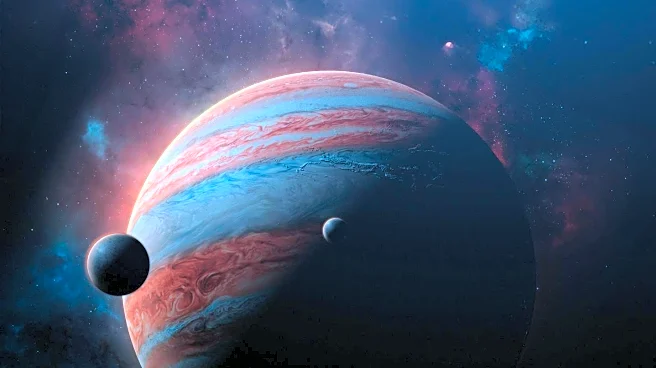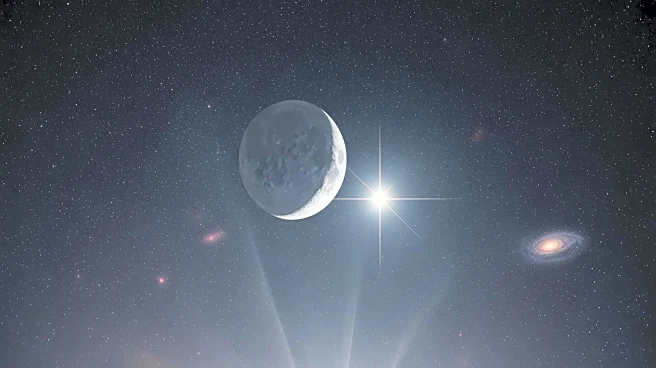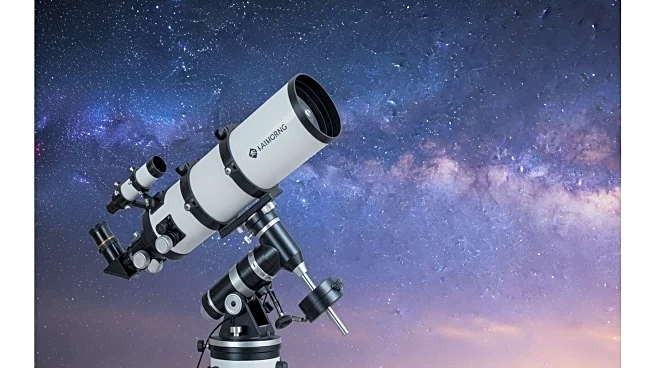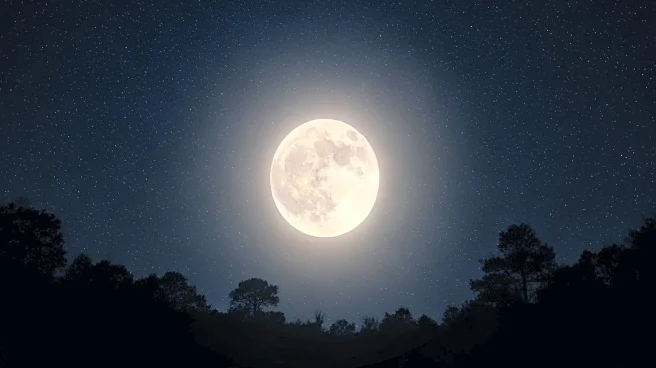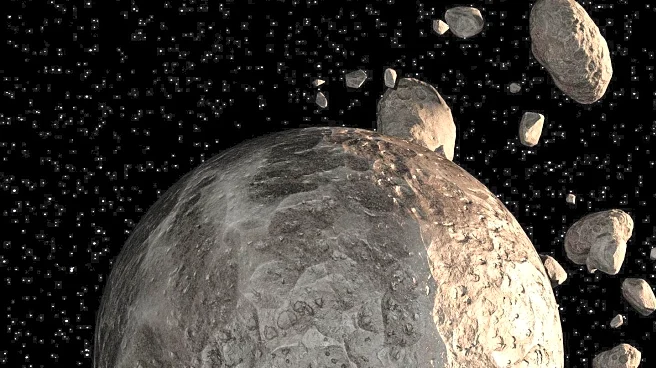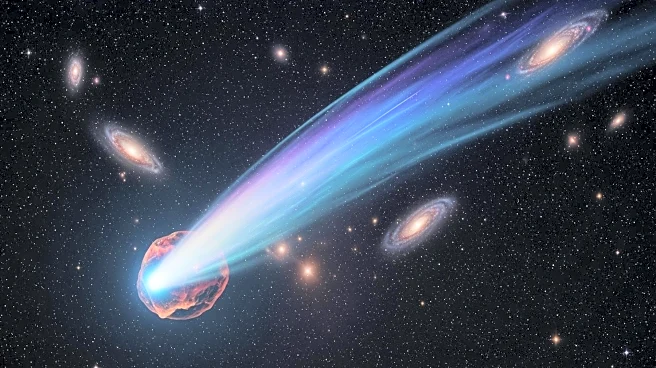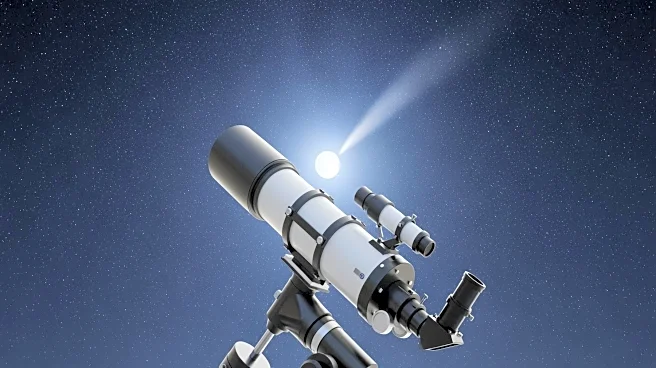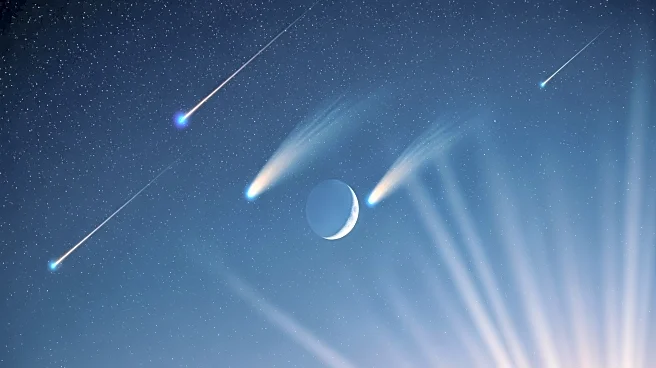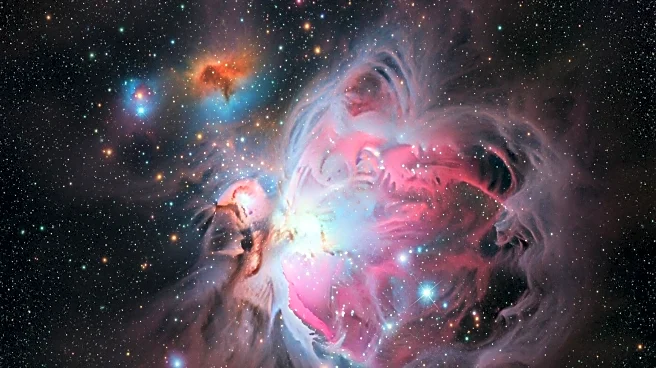What's Happening?
On October 24, the Moon will pass close to the red giant star Antares in the constellation Scorpius, offering a celestial event visible shortly after sunset. Observers can expect to see the Moon positioned
0.5° south of Antares, with the best viewing time approximately 40 minutes after sunset. This event may also reveal earthshine and Mare Crisium on the Moon's surface when viewed through binoculars. Concurrently, the Teapot asterism of Sagittarius will be visible to the upper left of the Moon and Antares. Additionally, on October 25, a notable astronomical event will occur for observers on the U.S. West Coast, where the moons Io and Europa will cast shadows on Jupiter's cloud tops, visible through a telescope before sunrise.
Why It's Important?
These celestial events provide an opportunity for amateur astronomers and sky enthusiasts to observe and appreciate the dynamics of our solar system. The close encounter between the Moon and Antares, along with the shadow event on Jupiter, highlights the intricate movements and alignments of celestial bodies. Such events can inspire interest in astronomy and science, encouraging educational pursuits and public engagement with space exploration. For the scientific community, these observations can contribute to ongoing research and data collection, enhancing our understanding of planetary and lunar interactions.
What's Next?
Following these events, sky watchers can look forward to more astronomical phenomena as the year progresses. The visibility of such events depends on weather conditions and geographical location, so enthusiasts are encouraged to stay updated with local astronomical forecasts. Future celestial events may include meteor showers, planetary alignments, and eclipses, offering further opportunities for observation and study. The continued interest in these events may also lead to increased participation in community astronomy clubs and educational programs.
Beyond the Headlines
The observation of celestial events like the Moon's proximity to Antares and the shadow play on Jupiter can have cultural and philosophical implications, reminding humanity of its place in the universe. These events can foster a sense of wonder and curiosity about the cosmos, potentially influencing cultural narratives and artistic expressions. Additionally, they serve as a reminder of the importance of preserving dark skies and reducing light pollution to ensure future generations can enjoy and study the night sky.
